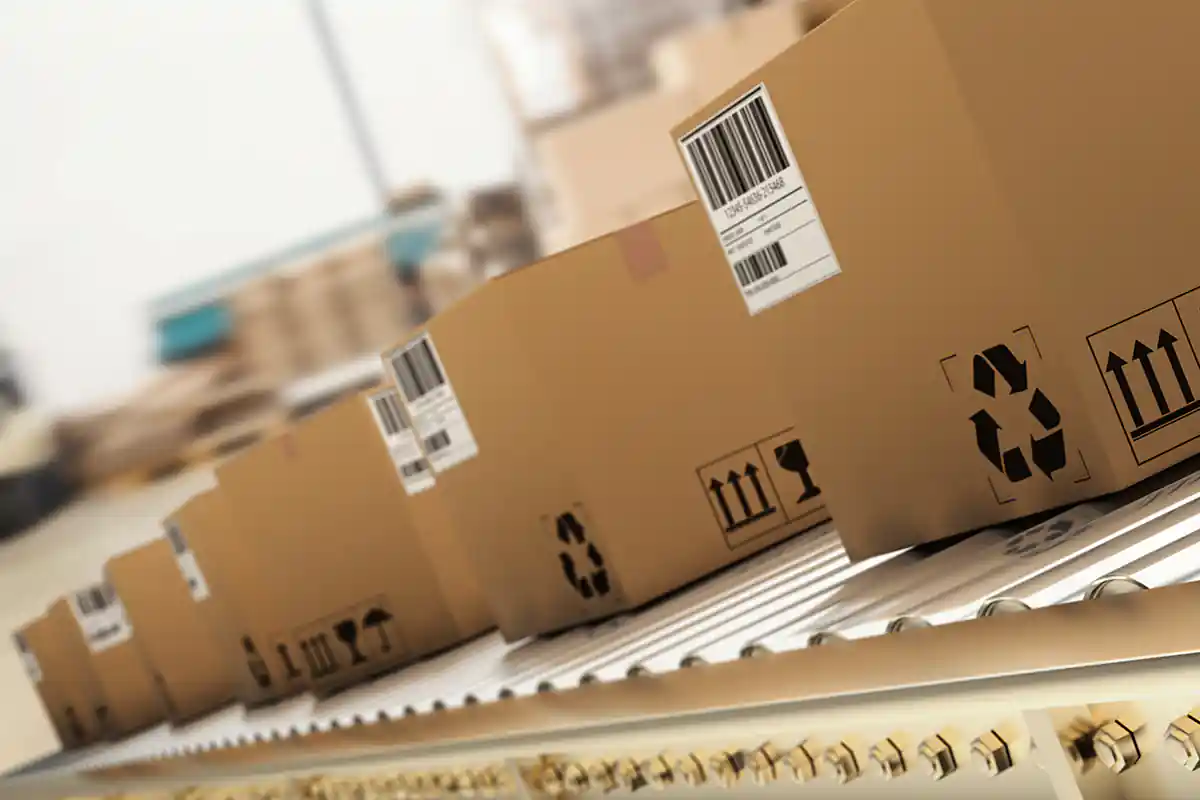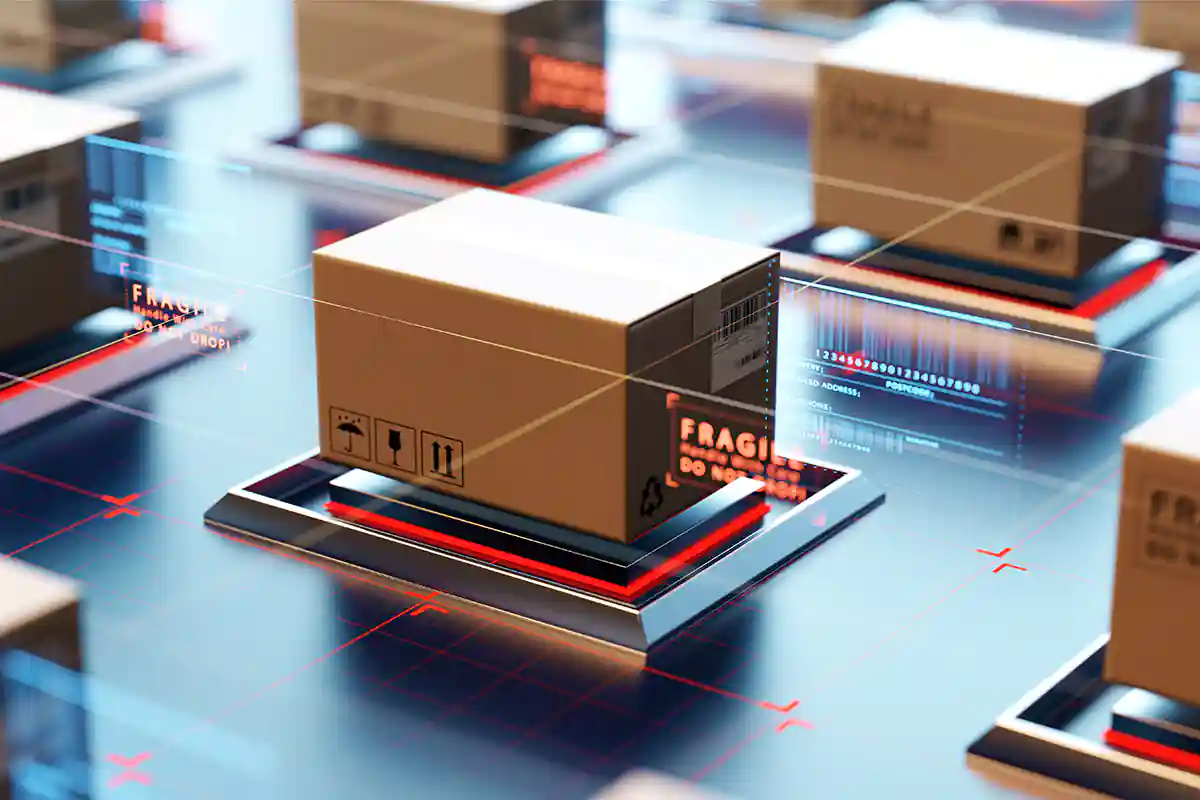Customers hate long Delivery Times
Fast deliveries are an important competitive factor today. However, there is often untapped potential along the supply chain - from the manufacturer and wholesaler to warehouse and dispatch. Some of these are highlighted below.
book1376 words timelapse7 minutes reading time
Consistently inform Customers 🔗︎
For customers, time starts ticking when the order has been placed. This is why a good communication strategy is very important, especially if there are imminent delays or incorrect deliveries. In many cases, misunderstandings can be cleared up and customers can be satisfied. In indirect words: Well-informed customers are more understanding, canceling and returning orders less often. Thus, warehouse staff can concentrate more on minimizing throughput times. A positive side effect: In the long term, the number of loyal customers increases. Loyal customers' needs can be better predicted and standardized. This also shortens warehouse throughput times.
Improve Warehouse Processes 🔗︎
Arrange Stored Goods better 🔗︎
If customers order certain goods more frequently and in combination with other goods, it makes sense to store such stocks next to each other in the warehouse. Also, in general, items should be grouped according to the frequency of their demand. The arrangement of where goods are stored and their proximity to loading bays should reflect this. In addition, by making regular check you can monitor how much demand there is for each item and how it is changing. One way to do this would be to tag goods with internal codes called SKUs. This allows items to be found more quickly and their frequency of demand can be reliably estimated.
Consider Lean Manufacturing Approaches 🔗︎
In order to improve warehouse processes, you can consider the 5S principles known in the field of lean manufacturing: Sorting, systematizing, cleanliness, standardization and self-discipline. Work processes can thus be reorganized and standardized appropriate. As a result, warehouse processes become more efficient and faster.
Optimize Lighting 🔗︎
There is a correlation between lighting and work speed. Many warehouses have little or no daylight, the existing lighting is often old and has deficits. LED lighting - a trend of recent years - could be the right answer here: Compared to conventional light sources, LED lighting is significantly brighter with considerably lower power consumption. Storage areas can thus be illuminated much better. As a result, process times are shortened:
Use Mobile Solutions 🔗︎
Mobile solutions like DATACAP in the warehouse: Anyone who thinks of faster work processes is right. If data can be viewed almost continuously, decisions can be made faster. Mobile data queries provide answers to questions such as how many items are still in stock or in other branches. Subsequent delivery times can also be found out in this way. For mobile barcode scanners: If 1D barcodes are still used in the company, it may be worth switching to 2D barcodes. 2D barcodes can store more data, are more error-tolerant and can be scanned from different angles. Mobile data capture also ensures that scanned data gets into the ERP system faster.
Consider Automation Solutions 🔗︎
Many automation solutions discussed in trade press have larger companies in their sights. Amazon’s use of innovative robotic technologies is one example. However, companies with smaller budgets can also benefit from more warehouse automation. For example, critical sub-areas in the warehouse can be automated selectively. Renting automation solutions on an as-a-service basis is another - currently growing - alternative. The use of conveyor belts - wherever possible and sensible - is another option. Walking distances of warehouse employees are thus significantly shorter and internal transport times are reduced.

Faster Loading 🔗︎
There is often unrealized potential in the shipping process, too. Here, several adjusting screws can be set.
Pre-Allocated Cross Docking 🔗︎
PAXD is a single-stage system in which pre-picked goods and merchandise are forwarded to the recipient unchanged - as soon as they arrive in the warehouse. For example, washing machine manufacturers or the corresponding wholesalers then pack and label the washing machines in advance. Later, at the transhipment point, the appliances can be reloaded directly onto the loading ramps of corresponding retailers. There are no large loading areas needed, but more loading ramps and loading gates.
Break-Bulk Cross Docking 🔗︎
BBCD goes one step further. In this procedure, goods are loaded onto other vehicles such as lorries or vans promptly after arrival at the interim storage facility and without being stored, usually in smaller order quantities. This eliminates the need for time-consuming storage and retrieval. It is important that both the relevant data and IT support are available. Advantages: the first-in, first-out principle can be implemented consistently and you can also avoid exceeding the minimum shelf life. In addition, eliminating temporary storage saves time and costs.
Delays due to Incidents with Industrial Trucks 🔗︎
Warehouse vehicles such as forklifts can cause damage to people, goods, plants, machines and buildings in the loading process, leading to prolonged disruptions. There are occurring particularly dangerous situations when high-traffic forklift routes are crossing those of warehouse workers on foot. Forklift operations in the loading dock area are also among the most dangerous places to work in the warehouse. To ensure that relevant risks are reduced as best as possible a careful planning is important. For example, you can install warning signals at dangerous points. In addition, loading ramps can be equipped with protective wedges.
Easier Docking 🔗︎
The docking of trucks at loading ramps often leads to time delays, too. There is also a considerable risk of damage here, whose repair costs not only money but also productive time. The process should therefore be made as smooth and safe as possible. Supporting mirrors, light signals and barriers are well suited to direct the driver quickly and safely to the docking station. Docking can be further facilitated by a traffic light design that switches to green, yellow or red depending on the position. Drivers can thus dock faster and more precisely at unknown or difficult-to-access loading ramps without getting out of the vehicle. Once unloading or loading has been completed and the gate has been closed again, a green light signal releases the departure. If expertise is available, you can build such devices on your own. Alternatively, a professional solution can be called in. Trucks should also be secured with wheel chocks during the unloading and loading process to prevent possible rolling.
Deliver faster 🔗︎
The delivery process is often organized by the companies themselves. This usually works as long as there are no high requirements and sufficiently qualified staff is available. Sometimes, however, it is worth considering professional service providers. For example, if there are frequently missed delivery times.
Involve External Service Providers 🔗︎
In case of shipping and logistics, service providers can be roughly divided into two categories:
In practice, these terms are often used synonymously. However, 3PL service providers focus more on warehouse and shipping processes. 3PF providers often cover a broader spectrum. They can take on additional tasks in the supply chain and offer supporting services in e-commerce, CRM and distribution. Another category of so-called fourth party logistics providers (4PL providers), which coordinate 3PL and 3PF service providers - often cloud-based - is emerging. Under certain circumstances, individual special logistics services are also worth considering. For example, for goods and commodities that do not fit into the standard processes of warehousing and shipping, dropshipping might be a way out. With dropshipping, the goods are stored at the manufacturer’s or wholesaler’s premises. If the retailer or e-shop receives an order, the goods are shipped directly from the storage location to the end customer.
Summary 🔗︎
There are several options along the supply chain to shorten delivery times. Companies communicating clearly and consistently can increase the number of loyal customers. This not only reduces the number of cancellations and returned goods, but also allows for better estimation, standardization and thus faster processing. In addition, warehouse throughput times can be reduced by choosing warehouse locations based on demand and considering the 5S principles from lean manufacturing. Productivity also increases when optimizing warehouse lighting, for example by switching to LED lighting. The use of mobile devices in the warehouse and for dispatching as well as automation through robots and assembly lines also speed up work processes. The loading and delivery process holds further potential: Pre-Allocated Cross-Docking (PAXD) and Break-Bulk Cross Docking (BBCD) should be considered here. Improved docking of trucks at loading bays and safe operation of industrial trucks also accelerate unloading and loading times. Finally, external shipping and logistics services - e.g. provided by 3PL and 3PF providers - can reduce delivery times.
8 Tips to avoid wrong Deliveries
Packaging and dispatch are the last stages before goods leave the company. It is all the more annoying if mistakes are made at this stage and customers are put off by incorrect deliveries. However, a few simple steps can significantly minimize this risk.
5 Ways Digital Logistics improves Business Processes
Digitalization is changing logistics processes. Today, some of these changes have growing importance for small and medium-sized companies (SME). Those dealing with the development in time can realize competitive advantages.

